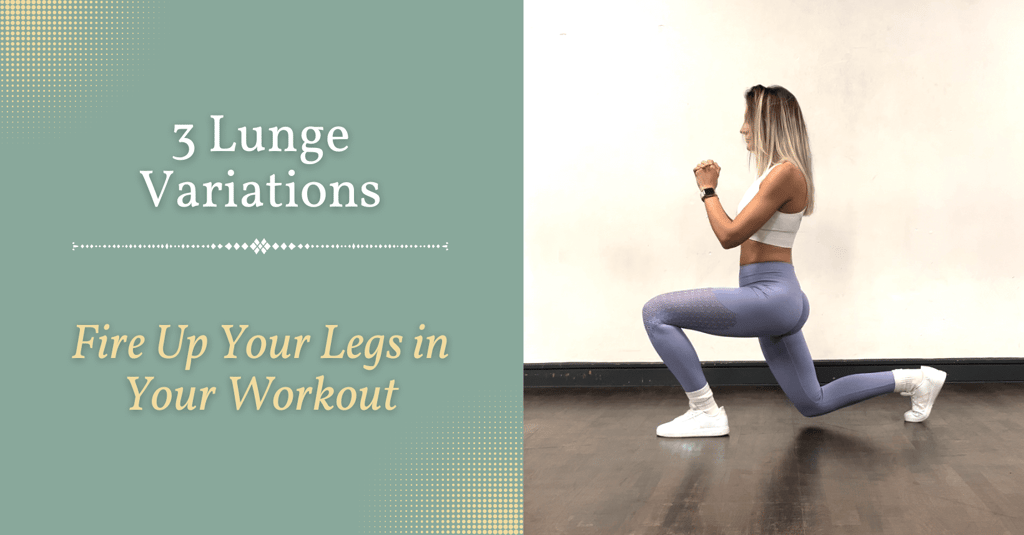Add your promotional text...
3 Lunge Variation You Should Include In Your Workout To Fire Up Your Legs
2/18/20234 min read


If you have any questions or need some assistance, feel free to submit a comment or send us a message here.
3. Side Lunge
This variation primarily works the inner and outer thighs, glutes, and hips.
It's a great exercise for improving flexibility and stability in the hips and legs.
How to perform:
Stand with your feet shoulder-width apart and your hands on your hips.
Take a big step to the side with one leg, keeping your other foot stationary.
Lower your body down, keeping your weight on your front leg and bending at the knee. Make sure your front knee is directly above your ankle, not your toe.
Push off your front leg and return to the starting position. Repeat the movement with your other leg.
Continue alternating sides for the desired number of reps.
Keep your core engaged and maintain good posture throughout the exercise.
1. Forward Lunge
This is a classic lunge exercise that targets the quads, hamstrings, glutes, and core muscles. It’s a great exercise for improving balance and stability and to increase resistance and strengthen the legs.
How to perform:
Standing with your feet shoulder-width apart and your hands on your hips;
Take a large step forward with one leg, lowering your hips towards the ground while keeping your back straight;
Bend your front knee to a 90-degree angle, making sure your knee is directly above your ankle and not past your toes;
Push off your front foot to return to the starting position;
Repeat the movement with your other leg.
2. Reverse Lunge
This variation places more emphasis on the glutes and hamstrings.
It’s a great exercise for improving your mobility and stability in the hips and lower back.
How to perform:
Stand up straight with your feet hip-width apart and your arms relaxed by your sides;
Take a step backward with your right foot, landing with your toes pointing forward;
Lower your body by bending your left knee until your left thigh is parallel to the floor.
Keep your right knee straight and avoid letting it touch the ground;
Push through your left heel to return to the starting position.
Repeat the lunge with your left foot stepping backward.
Note: When you’re performing any of the lunge variations, remember to keep your core engaged and maintain proper form throughout the exercise to avoid injury.
*Perform 8-12 repetitions/leg (per variation), focusing on proper form and controlled movements.
A lunge exercise is a very popular strength training exercise that primarily works your legs, glutes, and core muscles.
Lunges are a unilateral exercise given the fact that you are working one leg first then the other. Thus the lead leg is the one that requires workload, the rear leg is more for the support and balance. This helps you improve asymmetries, and can be used to improve your balance, stability, strength, and flexibility.
You can implement them as part of your workout routine to improve athletic performance, overall fitness, and functional movement patterns.
What Are The Benefits Of Lunges?
Improved leg strength: Targets multiple muscle groups in the legs and hips - such as quadriceps, hamstrings, glutes and calf muscles.
Better balance and stability: This is a unilateral exercise, since you work each side of your body separately. Therefore it activates your muscles which develops balance and stability and coordination.
Increased flexibility: Stretches the hip flexors, quads, and hamstrings, improving overall flexibility.
Better posture: Works on the core muscles, helping improve posture and reducing the risk of back pain.
Sports performance improvement: Lunges can improve dynamic stability, can improve agility, power and explosiveness in the legs, helping to improve overall athletic performance.
Improves core strength: Requires engagement of the core muscles to maintain balance, which can help improve core strength.
Cardiovascular workout: It can also be performed at a high intensity, providing a cardiovascular workout and improving endurance.
Prevents knee injury: Is a great way to strengthen the knee joints, which can help prevent knee injuries in the future.
Supports weight loss: Is a high-intensity exercise that burns a significant number of calories, making it a great addition to a weight loss program.
Summary:
Lunges are very good for both strengthening and injury prevention. All these functional exercises can be effective for you whereas it targets different muscle groups and can offer various benefits. They also challenge core stability in unilateral movement patterns, depending on the specific variation you choose.
3 Variation Of The Lunge
There are a variety of ways you can perform lunges: forward lunge, backward lunge or side lunge. Each of these variations works the same muscles but with more emphasis on different areas than others. Therefore, if you want to add a bit more challenge to your workout, you can include in your routine one or more of the variations.
Note: When you’re performing the Forward Lunge/Reverse Lunge, ensure that your front knee remains aligned with your ankle and does not move past your toes. Maintain a straight back throughout the movement.
Make Your Lunges More Challenging
You can hold a dumbbell in each hand and perform the lunge as usual. The added weight will increase the intensity of the exercise.
You can add weight by placing a barbell on your upper back and perform the lunge as usual. This option requires proper form and balance.
Alternatively, you can hold a kettlebell in each hand and perform the lunge as usual. The weight distribution of kettlebells can add an additional challenge to the exercise.
It's important to start with lighter weights and gradually increase to avoid injury and ensure proper form is maintained.
Summary
Ultimately, the most effective lunge will depend on your individual fitness goals, current fitness level, and personal preference. Incorporating a variety of lunge exercises into your workout routine can provide a well-rounded, full-body workout.
